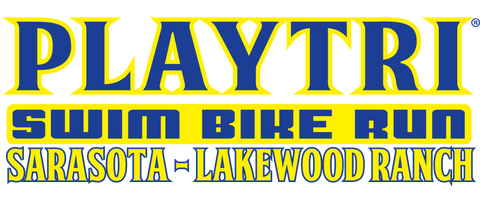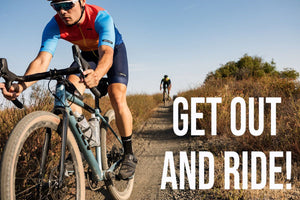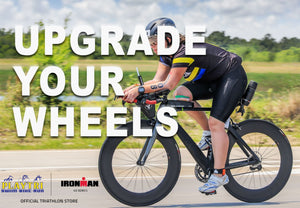
Road Bike Vs. Tri Bike
Bring the right weapon to the fight. The bike industry has developed many tools to combat the conditions of racing and you should know how to choose the correct one for your goals.
ROAD BIKE
A road bike has the traditional drop handlebars, skinny tires, and 10 or more gears. It is often the bike an athlete starts with before they realize how much they love the sport of triathlon. The geometry of the bike is designed with handling as the priority, to effectively climb steep slopes, descend sharp turns, and sprint through the finish line. To accomplish these goals, the saddle is farther back behind the bottom bracket thanks to the angle of the seat tube. With disc brakes and larger tire clearances, the road bike has become even more versatile as it can now go into gravel comfortably. If you have the budget for only one bike and plan to ride beyond triathlon, the road bike is likely the one for you.
The downside to road bikes in triathlon goes back to that seat tube angle. The bike forces you to sit farther behind the bottom bracket and therefore closes your hip angle. There are steps you can take to combat this, but it compromises the weight distribution and handling of the bike.
TRIATHLON BIKE
If you want to race triathlon effectively, get the correct weapon for the job. A triathlon bike has aero bars and bull horn handlebars. It is designed with aerodynamics as the priority. It is designed to go fast in a straight line and more frequently provide storage for the triathlete’s nutrition needs through long course racing. The geometry allows the athlete to sit more forward relative to the bottom bracket so they can open the hip angle while getting lower in the front end. The aero bars on the triathlon bike get an athlete lower and narrower to reduce drag and go faster at the same power. These bikes are only allowed in non-drafting triathlon which is much more common than draft-legal triathlon.
The triathlon bike will have diminished handling compared to the road bike but will be significantly faster for a solo effort over most courses. An exception would be a strict uphill course where speeds are below 12mph.
No matter the bike, you will need a professional bike fit to get the most out of the bike. Our fitters and coaches can help you find the right bike for you in consideration of your race goals and personal needs. Some exceptions apply to this conversation that should be discussed on a 1-to-1 basis.
Coach Ryan Siebert is a Level 2 Playtri Coach and a USAT Level I Coach with Long Course Area of Focus.


